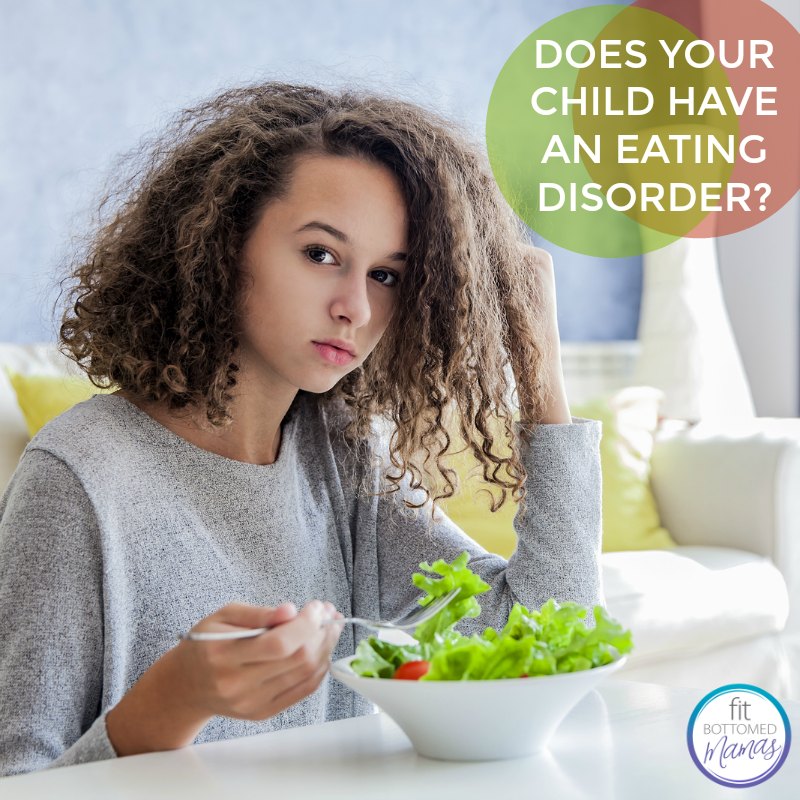Does Your Child Have an Eating Disorder?
Today’s post comes from Jillian Lampert who has a PhD, MPH, RD, LD, FAED and is the chief strategy officer for The Emily Program, a specialized eating disorder treatment program with locations in Minnesota, Ohio, Pennsylvania and Washington. She has worked for The Emily Program since 2006 and is the president and co-founder of the Residential Eating Disorders Consortium, whose main goal is to ensure access to eating disorder care. One of her main goals in life is to raise her daughter to accept and love her body. Read on for more info on the types of eating disorders along with their signs and symptoms in kids.

At least 30 million people in the United States have an eating disorder, and the rate of children living with eating disorders is on the rise. If you are a parent who is concerned that your child may be suffering from disordered eating, it’s important to know the facts and what signs to look for.
What Are Eating Disorders?
Eating disorders are real, complex, biologically-based mental illnesses that can cause severe harm. They are not a phase, a fad or a choice. Eating disorders are marked by extremes, such as dramatic calorie reduction, purging behaviors, uncontrollable overeating and/or unrelenting distress about body shape, size, and weight. While eating disorders rarely resolve on their own, they are treatable by professionals.
Types of Eating Disorders and Their Signs and Symptoms
Anorexia Nervosa. Anorexia is an eating disorder that revolves around reducing calorie intake and an obsession with weight. Sadly, it is among the most deadly of all mental illnesses. Typical signs of anorexia are a pursuit of thinness, a refusal to maintain an appropriate body weight, distortion of body image, over-exercising and disturbed eating behavior. Read more here.
Bulimia Nervosa. Bulimia is characterized by a cycle that involves overeating followed by purging, fasting, laxative use and/or over-exercising. Individuals with Bulimia may vomit multiple times a day and use other purging behaviors in secret out of shame. Warning signs include uncontrollable eating, compensatory behavior to offset weight gain, leaving for the bathroom immediately after eating, excessive weight talk and/or a misuse of laxatives. Read more here.
Binge Eating Disorder. BED is defined by repetitive and uncontrollable consumption of extreme amounts of food. Often individuals with BED report that binge eating soothes negative feelings and emotions. Warning signs include excessive eating without hunger, using food as a coping mechanism, and feeling out of control with food. People can gain weight from the overeating related to BED. Learn more here.
Other Specified Feeding or Eating Disorder. OSFED is a category for eating disorders that don’t meet the criteria for Anorexia, Bulimia, BED, or Compulsive Overeating. OSFED includes Atypical Anorexia (anorexia symptoms exhibited but weight remains normal), Bulimia with less frequent behaviors, Binge Eating with less frequent occurrences, Purging without binge eating and Night Eating Syndrome. Read more here.
Avoidant/Restrictive Food Intake Disorder. ARFID, previously referred to as Selective Eating Disorder, is a disturbance in eating that results in substantial weight loss, nutritional deficiency, and/or difficulty engaging in day-to-day activities. Warning signs include dramatic weight loss, stunted growth, fear of choking or illness, lack of interest in food, and no body image concerns. Learn more here.
Typical Warning Signs in Children
Weight changes. Any abnormal or unexplained weight changes (weight gain, loss or stunted gain despite growth) may be a result of disordered eating in children.
Strange food behaviors. Children who suffer from eating disorders often develop unusual behaviors or rituals around food and mealtimes. They may decide they don’t like several foods, spend a long time rearranging meals, develop a sudden interest in restrictive diets, and/or you may notice large quantities of food go missing quickly.
Avoidance of food. Children may begin to withdraw from activities revolving around food. They may miss family meals, avoid events where public eating is required, and/or express reasons they cannot eat.
Compulsive behaviors. Compulsive exercising, eating or other obsessive, anxious behaviors may be a sign your child is suffering from an eating disorder.
Personality changes. Drastic changes in your child’s personality and preferences may indicate eating disorder behaviors. Specific warning signs include an increased interest in cooking, but not eating the food, anxiousness, irritability, isolation, low grades and/or strained personal relationships.
What You Can Do If Your Child Has an Eating Disorder
If you believe your child has an eating disorder, the most important thing you can do is start a dialogue about it. Express your care and concern using “I” statements, like “I am concerned about you because I’ve noticed you aren’t eating dinner with us.” Then, listen. If they deny they have food issues, reiterate that you want to help them and are there to support them. You may need to have this conversation several times. We also suggest you monitor your child’s internet usage as many pro-ana (pro-anorexia) and pro-mia (pro-bulimia) websites exist that promote eating disorders, and social media pressures on appearance can be experienced intensely by youth.
While talking to your child about your concerns is essential, parents should trust their gut and bring their child in for an eating disorder assessment and possibly treatment. Parents can research treatment options and learn more about eating disorders to better understand what their child is going through. To get started with this process, you can call The Emily Program at 1-888-364-5977 or visit us here. From there, we can help connect you with a professional treatment team for your child. This team may include a therapist, dietitian, and/or psychologist.
Eating disorders are complex and severe, so it is essential to get your child help as soon as possible. With early intervention, your child can experience recovery faster. —Jillian Lampert
